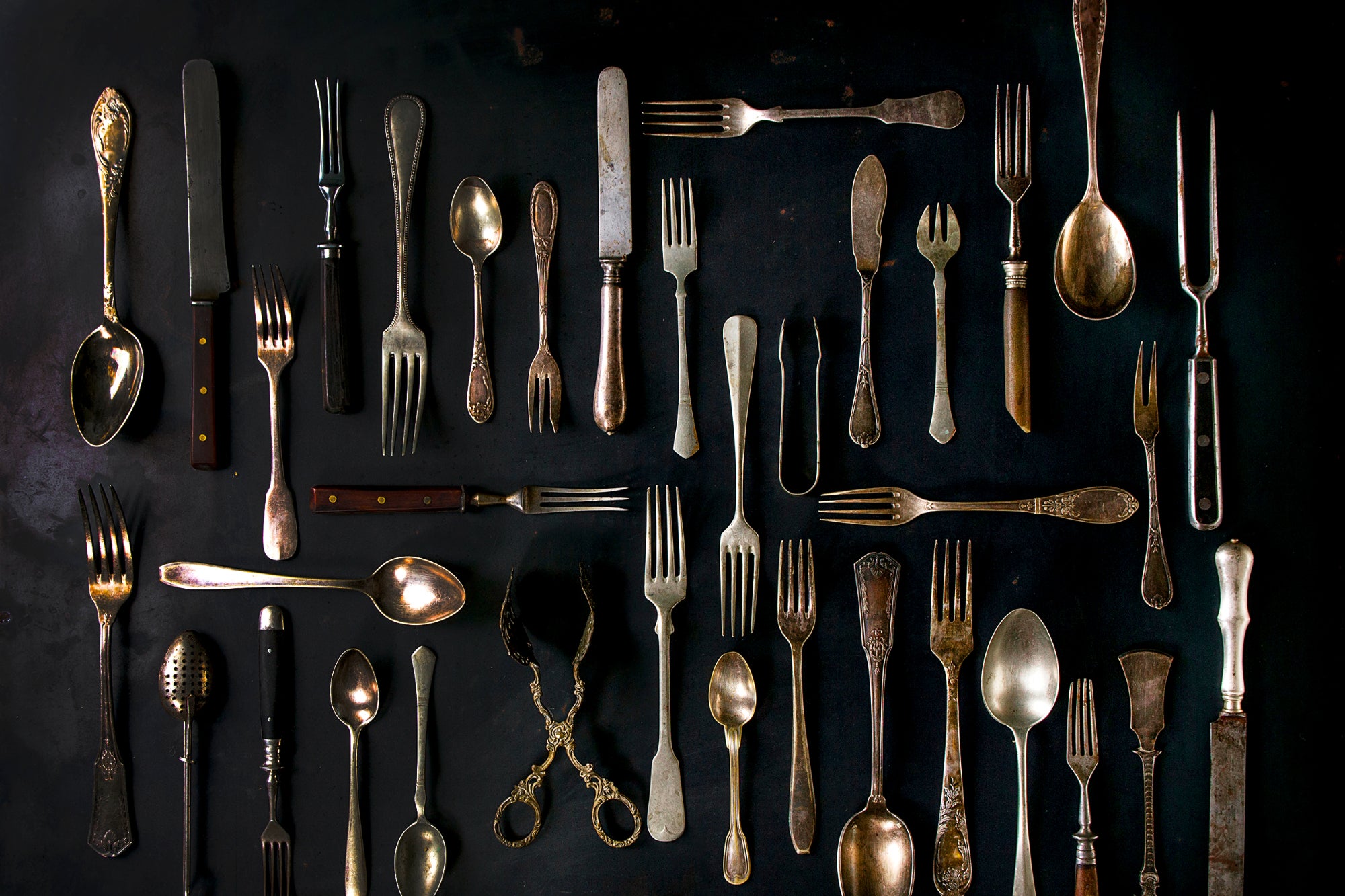How Can A Business Stay Relevant? Take A Cue From These Weird Little Forks In the 1800s, people ate with "macaroni forks" and "olive forks." Why? It's a timeless tale of consumer obsession.
By Jason Feifer Edited by Jason Feifer

If you attended a dinner party in the mid-1800s, you might have eaten each food with a different fork. There were forks designed specifically to eat sardines with. There were lettuce forks. Macaroni forks. Pickle forks. Cherry forks. For dessert, you'd have used a pastry fork. (Click to see; they're not pictured above.) And there were many more.
Why? In truth, it had nothing to do with the food — and everything to do with business.
These forks are a lesson in entrepreneurship. They're an insight into how smart companies can adapt to changing times, by understanding exactly what their customer wants. The silverware companies of the 1800s knew that, oftentimes, customers' top priority isn't the product itself. It's how a product makes them feel.
To understand what happened with forks, you first need to know where forks came from.
The Strange History of Forks
The fork may be common today, but it's a relatively new addition to our table. For most of the past two millenniums, the attitude toward forks went like this: "God has given us our hands. God gives us food. Our hands are worthy of touching that food," recounts Darra Goldstein, a food historian and cookbook writer, author most recently of Beyond the North Wind. "And you introduce something that is foreign and alien and metal that distances from the God-given food — and that is bad."
Forks did gain some popularity in Byzantium (now known as Constantinople) in the 11th century, when upper-class women used them to eat candied fruit. But when the Byzantium princess Maria Argyropoulina married a Venitian leader, she brought a fork with her…and things didn't go well. "The world of Venice was aghast," Goldstein says. The tool was immediately associated with the devil — because the forks of those days had two prongs, which looked like Satanic horns. "Unfortunately for the poor princess, she fell very ill and died shortly, so that was proof that she was consorting with the devil. And then the fork pretty much disappeared for a few more centuries."
The fork made a comeback during the Renaissance, beginning in the 1400s. Wealthy people in Florence, Italy, began constructing dining rooms for the first time, and then hosting elaborate banquets in them. They would serve up to 100 courses, have live birds flying out of pies, and wanted to create a sense of elegance and sophistication. Forks served that purpose: They enabled all these people to eat without messing up their hands.
After that, forks slowly gained acceptance around Europe. But when America declared its independence from Great Britain a few centuries later, its new citizens decided that the fork wasn't for them. When John Quincy Adams became president in 1825, he used forks in the White House — and according to Goldstein, "Americans were aghast."
"They said, "We Americans are simple people who fled the class system of Europe, and you're introducing something that distinguishes yourself from the rest of us,'" she says.
So what changed? That's how this becomes a story of entrepreneurship.
The Fork Becomes Cheaper
Up until the 1800s, utensils were extremely expensive. Ancient Romans made them out of lead, but that was a health hazard. Later people made them out of steel, but that can rust and make food taste bad. There just weren't a lot of good options for a safe, durable material throughout the centuries, except for very expensive metals. Silver was good, and gold was better.
For this reason, the average person might splurge to buy a single spoon and knife. But a fork was deemed an unnecessary luxury item. It became a status symbol for the rich.
Then the market changed. Silver plating was commercialized in the 1840s, which created a market of affordable, silver-plated forks. Then, in 1859, a massive amount of silver, known as the Comstock Lode, was discovered in Nevada, which flooded the market and lowered the price of silver.
Suddenly, the average person could buy a fork. That meant the wealthy had lost their status symbol.
The New Forks Arrive
A fork was no longer cool. It was common. And that was a problem for silver companies.
"What were the wealthy to do?" says Goldstein. "They still had to find a way to be distinctive,"
The dominant silver companies of the day, like Tiffany & Co. and Gorham, understood this. They knew that, to their wealthy customers, a fork was not just a tool for eating. It was a symbol, and using it made them feel special. To maintain their fork businesses, they needed to find new ways to deliver that same emotional value.
"So they started making different kinds of forks for different kinds of food," Goldstein says.
This is where sardine, olive and macaroni forks come from. (At the time, macaroni was very fashionable.) These new products came with new routines: A customer could feel exclusive by using a specialized fork for each item on a plate, while the rest of the world just used the same old fork for everything.
Did it last? Yes and no. Most of these forks eventually faded away, replaced by even newer products that inspired those same old emotions. But a few are still with us, like the salad fork and the fish fork.
Most importantly, these forks remain a quirky lesson in customer obsession. A brand produces products and services, but entrepreneurs can't be defined solely by what they create. They have to understand the deeper connection they create with their consumer — the way they fit into people's lives, and the emotional value they deliver. If an entrepreneur can internalize that, they'll have a far easier time pivoting during times of change.
Because while tastes may evolve, and industries and markets will shift, consumers will always want to feel special.
There's more to know!
Hear the full history of the fork, including how it changed the way we eat and think about ourselves, in this episode of the podcast Build For Tomorrow. Or sign up for a newsletter about how people fear and accept innovation.











